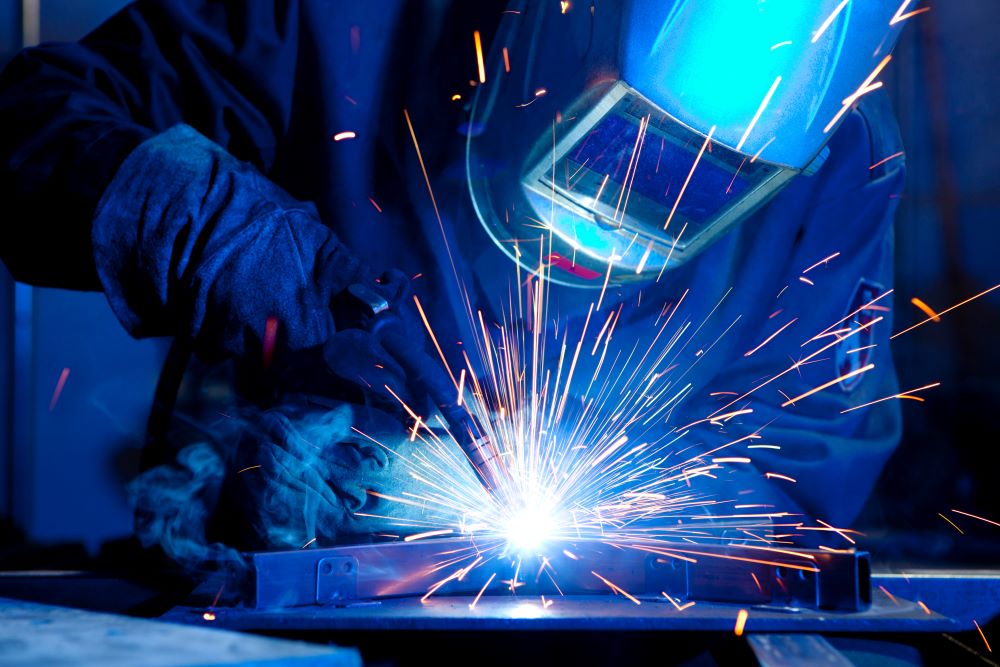Unlocking the Power of Welding WPS: Strategies for Efficiency and Safety in Fabrication
In the realm of construction, Welding Treatment Specs (WPS) stand as the backbone of welding operations, dictating the necessary steps for accomplishing both efficiency and safety in the manufacture process. Recognizing the intricacies of WPS is paramount to harnessing its complete capacity, yet numerous organizations struggle to open the true power that exists within these files (welding WPS). By diving right into the methods that enhance welding WPS, a world of improved performance and enhanced security waits for those ready to check out the nuances of this vital facet of manufacture

Relevance of Welding WPS
The significance of Welding Procedure Specifications (WPS) in the manufacture industry can not be overstated. WPS function as a crucial roadmap that outlines the required actions to make sure welds are carried out regularly and correctly. By defining vital criteria such as welding procedures, materials, joint layouts, preheat temperatures, interpass temperature levels, filler metals, and post-weld warm treatment demands, WPS provide a standard method to welding that boosts effectiveness, top quality, and security in manufacture processes.
Adherence to WPS assists in achieving harmony in weld quality, minimizing the likelihood of defects or structural failures. This standardization likewise facilitates compliance with industry regulations and codes, making certain that fabricated structures fulfill the required safety and security standards. In addition, WPS paperwork enables welders to replicate successful welding treatments, bring about regular results throughout different jobs.
Essentially, the thorough development and stringent adherence to Welding Treatment Specs are critical for supporting the stability of bonded structures, securing versus possible dangers, and maintaining the track record of manufacture firms for delivering top quality product or services.
Trick Elements of Welding WPS

Enhancing Efficiency With WPS
When optimizing welding procedures, leveraging the vital aspects detailed in Welding Treatment Specs (WPS) comes to be important for maximizing and improving procedures performance. One means to enhance performance with WPS is by carefully picking the appropriate welding parameters. By adhering to the details standards given in the WPS, welders can make sure that the welding devices is established correctly, resulting in premium and constant welds. In addition, following the pre-approved welding series outlined in the Going Here WPS can substantially reduce the time invested on each weld, inevitably boosting general performance.
Routinely reviewing and upgrading the WPS to incorporate any lessons found out or technical improvements can also add to effectiveness renovations in welding operations. By accepting the standards established forth in the WPS and continuously seeking means to optimize processes, producers can attain greater efficiency levels and superior end results.
Ensuring Safety And Security in Manufacture

Safety protocols in fabrication play an essential function in guarding employees and maximizing functional treatments. Making certain safety and security in manufacture involves a multifaceted strategy that includes different aspects of the welding procedure. One essential element is the provision of individual protective equipment (PPE) customized to the certain risks existing in the construction environment. Welders have to be furnished with ideal equipment such as helmets, handwear covers, and safety clothes to minimize dangers connected with welding tasks.
In addition, adherence to appropriate air flow and fume extraction systems is essential in keeping a healthy workplace. Welding fumes consist of harmful compounds that, if breathed in, can pose severe health and wellness dangers. Carrying out effective ventilation actions helps to lessen direct exposure to these dangerous fumes, advertising respiratory system health amongst employees.
Regular devices upkeep and examinations are likewise essential for making certain safety in construction. Malfunctioning equipment can lead to mishaps and injuries, emphasizing the importance of prompt repairs and routine checks. By prioritizing security actions and cultivating a culture browse around this web-site of understanding, construction centers can create a efficient and safe job environment for their workers.
Applying WPS Ideal Practices
To enhance operational performance and make sure top quality outcomes in manufacture processes, integrating Welding Procedure Requirements (WPS) finest techniques is critical. Picking the suitable welding process, filler product, and preheat temperature defined in the WPS is important for attaining the desired weld high quality. Ensuring that qualified welders with the essential certifications bring out the welding treatments according to the WPS guidelines is necessary for uniformity and reliability.
Final Thought
Finally, welding WPS plays an important function in making certain performance and safety in manufacture processes. By focusing on crucial elements, improving performance, and implementing best methods, firms can maximize their welding operations. It is necessary to focus on safety and security measures to avoid mishaps and make sure a smooth manufacturing procedure. By following these strategies, companies can unlock the full capacity of welding WPS in their construction operations.
In the realm of construction, Welding Procedure Specs (WPS) stand as the backbone of welding procedures, dictating the needed steps for accomplishing both efficiency and safety in the fabrication procedure. By specifying crucial criteria such as welding procedures, materials, joint designs, preheat temperatures, interpass temperature levels, filler metals, and post-weld warm therapy demands, WPS supply a standardized approach to welding that enhances performance, top quality, and security in fabrication processes.

When enhancing welding procedures, leveraging the key aspects laid click to read more out in Welding Procedure Specs (WPS) comes to be essential for enhancing procedures and making the most of efficiency. (welding WPS)